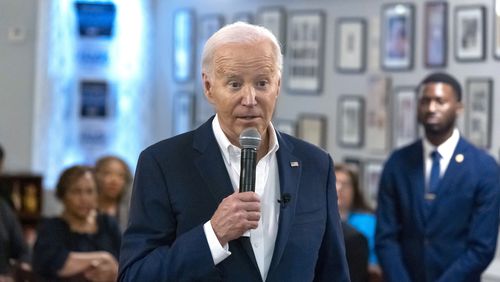WASHINGTON — Early in his Marine Corps career, which he concluded as a four-star general, Walt Boomer was decorated for valor in Vietnam. He distilled into three words the lesson of that debacle: “Tell the truth.” Max Hastings, an eminent British journalist and historian, has done that in a book that is a painful but perhaps inoculating re-immersion in what Americans would prefer to forget.
“Vietnam: An Epic Tragedy, 1945-1975” is a product of Hastings’ prodigious research and his aptitude for pungent judgments. It is an unsparing look, by a warm friend of America, at the mountain of mendacities, political and military, that accumulated as the nation learned the truth of the philosopher Michael Oakeshott’s axiom: “To try to do something which is inherently impossible is always a corrupting enterprise.”
Vietnam remains an American sorrow of squandered valor, but it was vastly more a tragedy for the Vietnamese, 2 million to 3 million of whom died during the 30 years war — around 40 for every American who died during the 10 years of intense U.S. futility. U.S. statesmen and commanders, Hastings writes, lied too much to the nation and the world but most calamitously to themselves.
In 1955, Hastings writes, Secretary of State John Foster Dulles sent a cable to Saigon authorizing the removal of South Vietnam’s Prime Minister Ngo Dinh Diem, “much as he might have ordered the sacking of an unsatisfactory parlor maid.” Six hours later, Dulles changed his mind, so Diem lived until he was murdered in the 1963 coup authorized by John Kennedy. Hastings’ tangy writing tells us that as the coup approached, a U.S. operative arrived at the South Vietnamese army’s headquarters “carrying a .357 revolver and $40,000 in cash, which he deemed the appropriate fashion accessories for an afternoon’s work overthrowing a government.”
Almost every Hastings page contains riveting facts, such as these about the French, whose Indochina miseries preceded America’s: “While they abolished the old custom of condemning adulteresses to be trampled to death by elephants … opium consumption soared after the colonial power opened a Saigon refinery.”
Eddie Adams’ Pulitzer Prize-winning photograph of Saigon’s police chief shooting a Viet Cong in the head during the 1968 Tet Offensive seemed to validate some Americans’ sympathies for enemy. Hastings casts a cold eye, noting that the Viet Cong was in civilian clothes, and had just cut the throats of a South Vietnamese officer, his wife, their six children and the officer’s 80 year-old mother.
Hastings' detailed reports of battles — a few famous ones; others unremembered except by participants on both sides, some of whom Hastings tracked down — are as successful as printed words can be in achieving his aim of answering the question "What was the war like?" "This," says Hastings, "was a 'Groundhog Day' conflict, in which contests for a portion of elephant grass, jungle, or rice paddy were repeated not merely month after month, but year upon year." America's inevitable failure there might, however, with Hastings' help, prevent America from having a "Groundhog Day" foreign policy.
A history book can be a historic act if, by modifying a nation’s understanding of its past, it alters future behavior. Obviously Vietnam itself was insufficiently instructive. On page 752, the book’s concluding words are Gen. Boomer’s: “It bothers me that we didn’t learn a lot. If we had, we would not have invaded Iraq.” Sometimes, contrary to Marx, history repeats itself, first as tragedy, then not as farce but as tragedy again.
About the Author
Credit: AP





